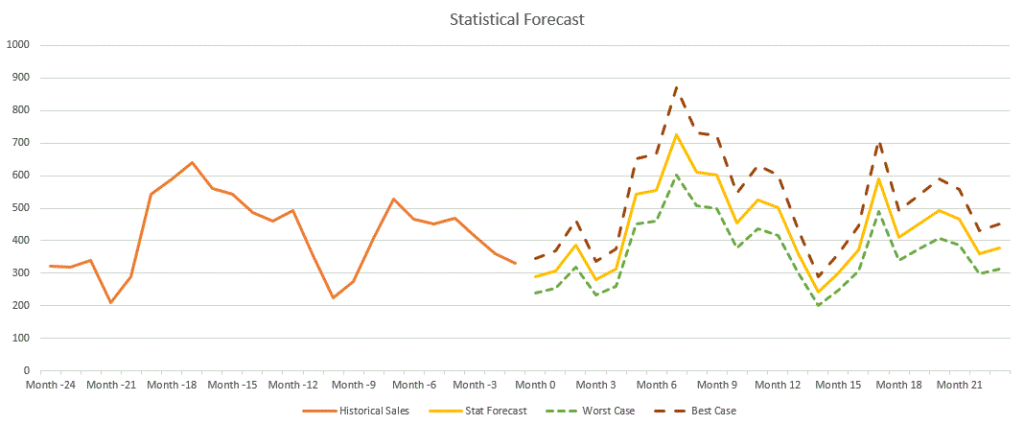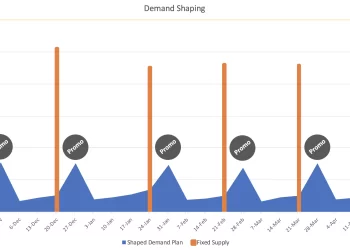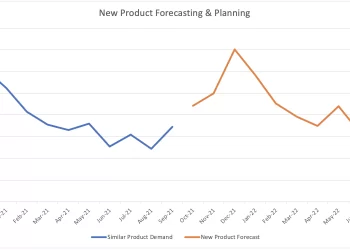What are the Best Statistical Models to Use for Demand Forecasting?

Accurate demand planning is one of the biggest competitive advantages for a company in today’s fast-paced global economy. However, each industry and niche has its own demand patterns. How do you know which statistical forecasting model to use with which demand pattern?
Types of Statistical Models
There are three major statistical models for forecasting demand. Each of the major models also has several different variations. Each of the models and their variations has different strengths and weaknesses. The major statistical models are:
- Trend projection
- Barometric
- Econometric
Each model is a better fit for some demand patterns than others.
Trend projection
Trend projection is also sometimes referred to as the least square method. It is the traditional model for business forecasting, although it is used much less frequently today for a variety of different reasons. Trend projection requires a lot of reliable data about past performance. This method analyzes the past data and projects future trends.
This model is useful for forecasting stable demand patterns. The trend projection can be used to study both linear trends and exponential trends. The only difference will be the mathematical equation applied to the data.
Tend projection is easy, so long as you have the past data. However, it is not useful for forecasting new products. It also assumes that variables will continue to change at a constant rate. This is rarely ever true in business. This means the more erratic the demand pattern, the more unreliable a forecast will be that is based on the trend projection.
Barometric
This method uses past events or current events to forecast future demand. There is a strong qualitative component to this model. Humans will need to decide what the key events are that may affect future demand before constructing the model and making a forecast.
For example, a triggering event could be a large commercial land sale. This will mean an increase in demand for building materials. These factors can be incorporated into the model.
This model does not require the amount of past data that the trend projection model does. It also takes into account present day realities. However, this model only works when there is a significant time delay between the indicators and demand. It does not work for new products, nor does it work for fast moving industries, such as most segments of the technology industry.
Econometric
Econometric models are the most reliable statistical models for forecasting demand. They combine statistical analysis with economic theories. There are two different econometric sub-models:
- Regression and variants of regression
- Simultaneous equations
Regression is the most popular statistical model for predicting demand. Demand is setup as the lone dependent variable. Everything that affects demand is an independent variable. Where only one factor affects demand, it is called simple regression. If more than one variable affects demand it is called multiple regression.
Simultaneous equations, uses two or more different equations to forecast demand. It is very data intensive and complicated to use, but is usually very accurate.
The econometric model is effective for forecasting most demand patterns. It uses a combination of past data and current events. It is not perfect and can be complicated to use. It some specialized cases it may best to use a specialized statistical model particular to that demand pattern.
Using Best Fit or Bayesian Blend?
How do you know what statistical model to use when forecasting demand? There are a number of different demand patterns. Some products and industries are more prone to one type of demand pattern than another. Demand could be cyclical, seasonal, latent, negative, or random.
Random demand is the most difficult to forecast because it does not seem tied to any knowable variables. However, with careful study, even random demand often is revealed to be not random at all. The issue is just understanding what the correct variables are that affect demand.
You first need to understand what demand pattern you are dealing with, and then you must understand what the key variables are that affect demand. But, even when you are armed with this knowledge you may still have a problem.
Should you choose the statistical model that is the closest fit for your demand pattern, even if it is not a perfect fit?
For most industries, the better choice will be to use a Bayesian blend. This allows you to blend two different models when creating a forecast. You can increase your accuracy by using two models that compensate for each other’s weaknesses when it comes to your particular demand pattern.
Often, commercial demand forecasting software is the best practical way to effectively use Bayesian blends.
When forecasting you always have to measure the value your demand forecast provides against the costs of its errors and the costs of making a forecast. A Bayesian blend can lower the costs of errors without significantly affecting the cost making the actual forecast.
Topics: Causometrix, inventory forecasting, statistical demand forecasting, Demand forecasting
Written by Jamsheed Iqbal
Topics:
4 Comments
Leave a Reply Cancel reply
Recent Posts
-
Best Practices for Demand Sensing, Demand Shaping, & Influencing Demand
Despite vast improvements in the tools and techniques available today for demand sensing and demand shaping, a lack of forecast accuracy still prevents many businesses from optimally managing production, distribution, inventories, and sales to meet shifts in demand. This is often because:
October 12, 2021 Read more -
How to Effectively (and Accurately) Forecast and Plan for New Product Demand
Many businesses, large and small, have a huge source of great ideas that can help them improve, innovate, and grow, and yet so many of these companies never think of using this amazing corporate asset. What is this highly valuable asset? Its own people.
September 28, 2021 Read more -
How to Measure your Demand Forecasting Accuracy
Many businesses, large and small, have a huge source of great ideas that can help them improve, innovate, and grow, and yet so many of these companies never think of using this amazing corporate asset. What is this highly valuable asset? Its own people.
July 13, 2021 Read more
Subscribe to email updates from Causometrix!
Stay up-to-date with Causometrix



I do believe all the ideas you’ve offered for your post.
They are very convincing and will definitely work. Still, the posts are very brief for beginners.
May you please lengthen them a bit from next time? Thank you for the
post.
I really like what you guys are usually up too. Such clever
work and exposure! Keep up the excellent works guys I’ve incorporated you guys to blogroll.
Peculiar article, exactly what I needed.
I am glad to be a visitor of this arrant weblog, regards for this rare information!